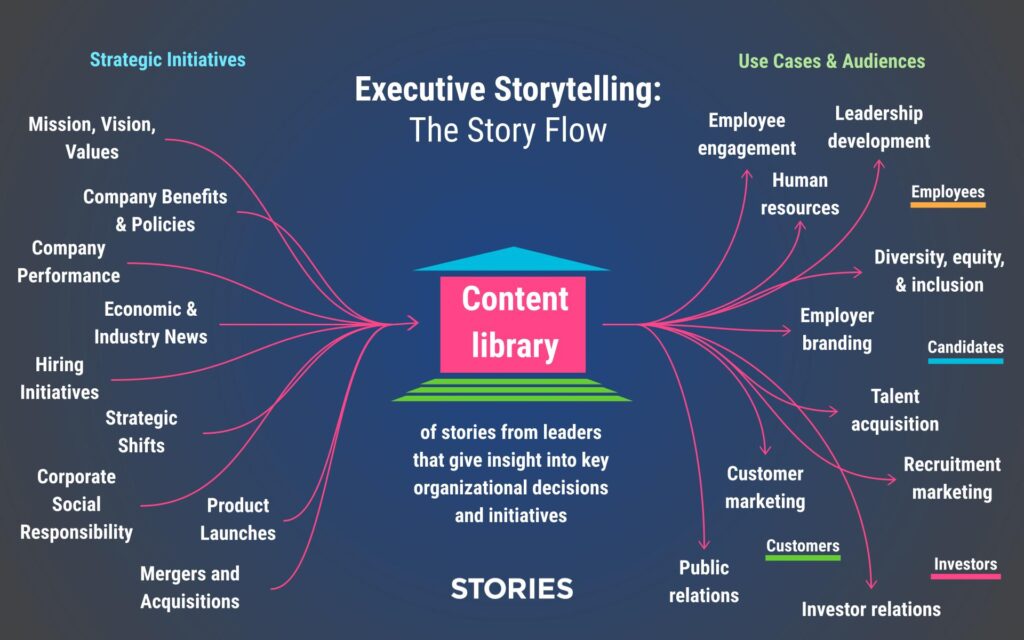What is Executive Storytelling?
This piece is an excerpt from our download, Storytelling for Leadership Communications: How to Humanize Leadership. Read on to learn more about executive storytelling.
As communications leaders, your goal is to foster engagement, create workplace alignment, and drive the success of organizational objectives. While most communications do a great job of explaining what is happening in the company, going a step further and showing why decisions were made goes a long way to building trust throughout the organization.
For companies that care about empowering employees with insights into the business, executive storytelling will be one of your most important strategies.
What is Executive Storytelling?
Executive storytelling is to humanize leadership at scale: creating a communications strategy that brings moments of vulnerability, personal stories, and connection to the masses. The goal is an aligned and engaged workforce. The output is a consistent drum beat of stories from leadership that amplify your organization’s most important decisions and initiatives.

Executive storytelling isn’t one campaign, video, or story. It’s a commitment to using real stories from leaders to build trust, communicate effectively, and provide support to employees and other stakeholders every step of the way. Even (and especially) when it’s not easy.
Many Opportunities to Humanize Leadership
Executive storytelling is more than a single ‘Meet the CEO’ video. If you look around your organization, you’ll see many critical strategic initiatives that could benefit from incorporating stories from leadership:
- Reinforcing mission, vision, and values
- Awareness of company benefits and policies
- Economic & industry news
- Hiring Initiatives
- Corporate Social Responsibility
- Product Launches
- Strategic shifts, such as mergers and acquisitions
…to name a few. With a storytelling approach to communications, you’ll incorporate stories from leadership that bring these initiatives to life in a more human way.
Why is Executive Storytelling Important?
By incorporating storytelling into your leader communications strategy, you build trust faster throughout your organization. This has ample ripple effects throughout your organization:
- Employee Engagement: At 77%, leadership trust is the highest-ranked motivator of employee engagement . And, employees of high-trust organizations report 74% less stress, 76% more engagement, and 50% higher productivity than low-trust organizations.1
- Attracting top talent: 74% of talent prefer to work for a company with a trustworthy reputation.2
- Employee Retention: 62% of employees who plan to stay with their current employers reported high levels of trust in their corporate leadership. Only 27% of employees planning to leave express that same trust.3
Download Storytelling for Executive Communications: How to Humanize Leadership to Build Organizational Trust
Sources
¹ State of Employee Engagement 2018, Qualtrics
² Trust in the Modern Workplace, Workforce Institute @ UKG
³ Talent 2020: Surveying the Talent Paradox from the Employee Perspective, Deloitte

